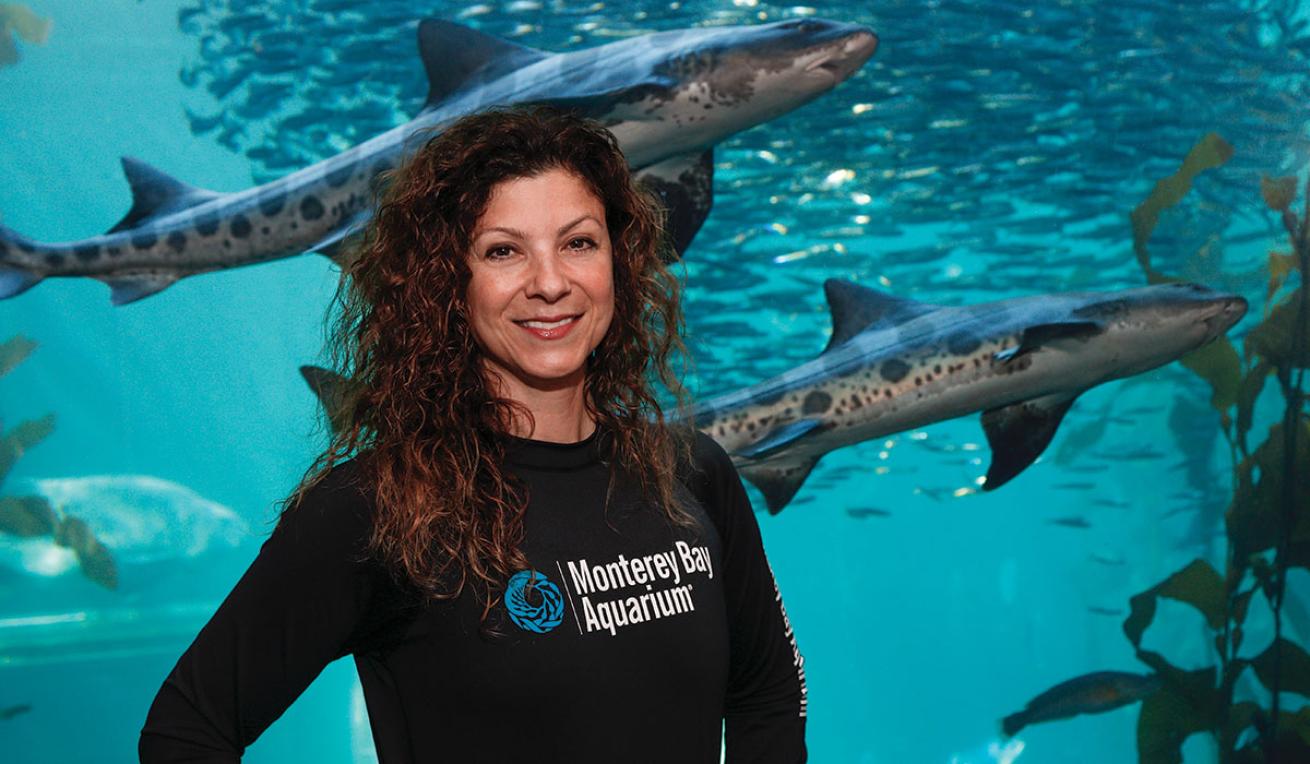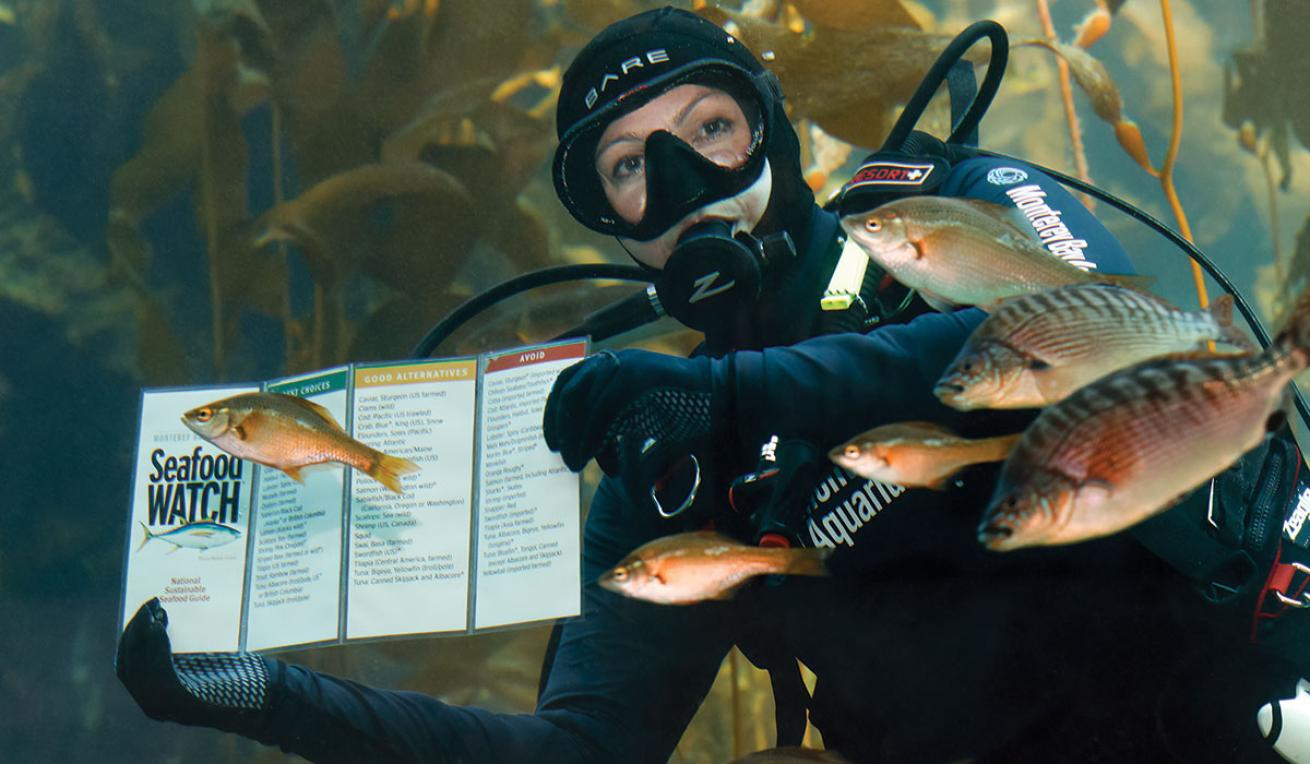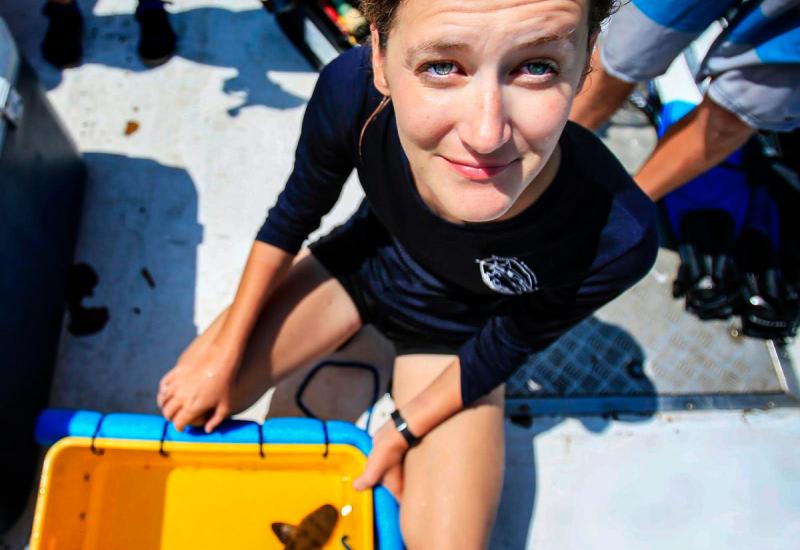Jennifer Dianto Kemmerly Honored as a Scuba Diving Sea Hero

Monterey Bay AquariumScuba Diving's latest Sea Hero, Jennifer Dianto Kemmerly, helps consumers make sustainable choices with the Seafood Watch program at the Monterey Bay Aquarium.
After getting certified in college, Jennifer Dianto Kemmerly embarked on life as a science teacher in the Florida Keys, where she could dive, dive, dive. But she had an epiphany as she noticed how passionate locals were about the creation of a national marine sanctuary, and how alert divers were to trends in the ocean. “It opened my eyes as to how engaged people can be when what they love, or need, changes,” she says. Today she is director of Global Fisheries & Aquaculture at Monterey Bay Aquarium and heads its Seafood Watch program, which since 2001 has helped millions of consumers make informed choices in sustainable seafood.
Q: Tell us about Seafood Watch.
A: Many consumers recognize Seafood Watch because of our pocket guide, of which we’ve distributed more than 60 million. The original guide was a tent card in the aquarium restaurant to inform guests which fisheries and aquaculture operations were environmentally responsible. We saw the cards quickly disappearing as people took them home — and Seafood Watch was born! The program still operates under its original “Theory of Change”: If enough consumers and businesses demand -environmentally responsible seafood, fisheries and aquaculture operations will improve their practices, and ultimately governments will enact strong management of these natural resources. Today we are at a pivotal moment where public awareness is strong, businesses are committed, seafood producers are demonstrating change, and governments are increasingly engaged. The success of the Seafood Watch program means that fisheries and aquaculture operations are more sustainable, contributing directly to improved global ocean health and the well-being of more than a billion people who rely on fish for their livelihoods.
Q: Statistics on overfishing are disheartening — is it too late?
A: It’s not. Seafood Watch, well, watches seafood — we assess the environmental performance of fisheries and aquaculture and make that information transparent. As performance changes, we update our assessments so we can see trends over time. With strong management — informed by science and with buy-in from stakeholders ranging from NGOs to the seafood industry — we have seen improvements. We like to bring consumers’ attention to the fact that things do improve when all actors take responsibility for their respective roles.

Monterey Bay AquariumKemmerly displays an oversize version of the Seafood Watch pocket guide at the aquarium.
Q: What are the biggest challenges to traceability?
A: Let’s say you’re in a restaurant and ask, “Where is this fish from?” or “How was it caught or farmed?” If you can’t get that information, it’s hard to identify whether that fish is from a sustainable source. That’s because where a fish is from or how it was caught or farmed matters. A certain type of fishing gear might have more environmental impact than another. A certain country might have more lax laws regulating fisheries. Traceability can also help us begin to address illegal, unreported and unregulated fishing and seafood fraud — selling a lower-value fish as one of higher value. My work has shown me that if enough consumers ask, businesses respond. And if you are willing to ask about your wine selection, grass-fed, hormone-free beef, or cage-free eggs, why not ask questions about your fish?
Q: What are you are working on now?
A: Recently we launched a partnership with the Carnegie Endowment for International Peace to engage governments in Southeast Asia to support fishermen and fish farmers interested in improving environmental and social responsibility and traceability. We also launched a Seafood Slavery Risk Tool so our business partners can identify fisheries where there is evidence of human-rights abuses and can help address the issue.
Q: How can divers help?
A: All divers have a passion for exploring, a curiosity about the marine environment, and knowledge of that serenity that one feels when immersed. They know what’s at stake. So I’d ask that individuals ask questions at their point of sale about their seafood. As dive communities, I’d ask that we educate one another, and engage local restaurants, retailers and seafood suppliers to make commitments to sourcing sustainable seafood. Because we all want our children and our global neighbors to have the chance to experience what we’ve experienced as divers and ocean stewards.










